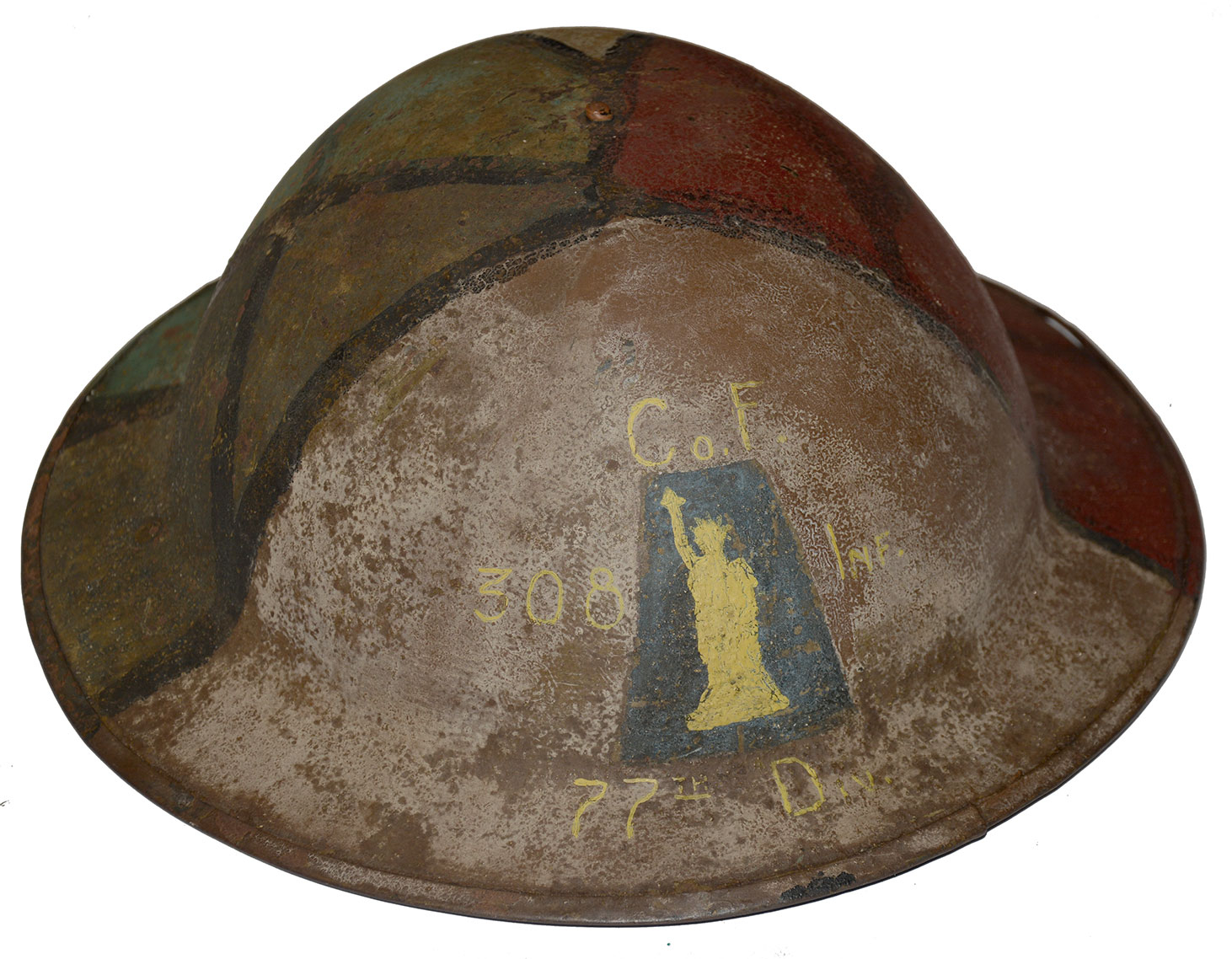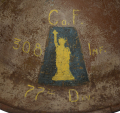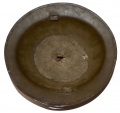site search
online catalog
FIRST WORLD WAR US M1917 HELMET WITH 77TH DIVISION INSIGNIA & CAMO PAINT

$395.00 SOLD
Quantity Available: None
Item Code: 246-113
This is a US made M1917 steel helmet used by a member of Company “F”, 308th Infantry, 77th Infantry Division.
Nearly identical to the British army helmet, the M1917 and later the M1917A1 were used up to the Second World War, being replaced by the M1 helmet, around 1941. Surplus helmets remained in service however with the US Civil Defense.
On the inside, this helmet retains only the felt pad in the crown, the remainder of the liner and chin strap are gone.
The exterior, however, is very fine. Painted in a camouflaged scheme with shades of red, white, and green. Color segments are separated by black lines. On the front is a 77th Infantry Division insignia with Statue of Liberty. Surrounding that reads “Co. F. / 308 Inf. / 77th Div.” in yellow.
Generally, the 308th Infantry is famously known as the “Lost Battalion” from the fighting in the Argonne. Unfortunately, Company “F” is not known to have been included in that portion of the regiment that was cut-off and “Lost”. This “Lost Battalion” consisted of companies A, B, C, E, G, and H of the 308th with some troops from other regiments, all commanded by Major Whittlesey.
A fine example of a “painted” WW1 helmet. [jet] [ph:L]
~~~~~~~~~~~~~~~~~~~~~~~~~~~~~~~~~~~
THIS ITEM, AS WITH ALL OTHER ITEMS AVAILABLE ON OUR WEB SITE,
MAY BE PURCHASED THROUGH OUR LAYAWAY PROGRAM.
CLICK HERE FOR OUR POLICIES AND TERMS.
THANK YOU!
Inquire About FIRST WORLD WAR US M1917 HELMET WITH 77TH DIVISION INSIGNIA & CAMO PAINT
For inquiries, please email us at [email protected]
Most Popular
Historical Firearms Stolen From The National Civil War Museum In Harrisburg, Pa »
Theft From Gravesite Of Gen. John Reynolds »
Selection Of Unframed Prints By Don Troiani »
Fine Condition Brass Infantry Bugle Insignia »
British Imported, Confederate Used Bayonet »
Scarce New Model 1865 Sharps Still In Percussion Near Factory New »
featured item
1847 CONGRESSIONAL RESOLUTIONS OF THANKS TO GEN. ZACHARY TAYLOR AND HIS OFFICERS AND MEN FOR MONTERREY, PERSONALLY DISPATCHED BY PRESIDENT POLK
Zachary Taylor received the formal thanks of Congress three times, along with gold medals, for victories in the Mexican War, the largest number of such resolutions and awards made by Congress to anyone. This is an official State Department copy on… (766-938). Learn More »
site search
Upcoming Events
May 16 - 18: N-SSA Spring Nationals, Fort Shenandoah, Winchester, VA Learn More »












